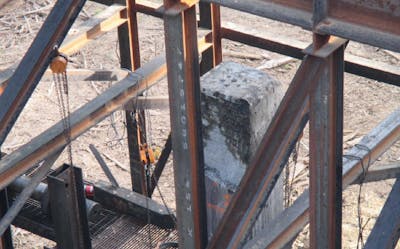
Almeda Road Widening and Reconstruction
Revolutionizing mobility and safety
Project Facts
| Location | Houston, Texas |
| Owner | City of Houston |
Overview
A reconstruction of Almeda Road between S. MacGregor and the Old Spanish Trail has unlocked a new era of vehicular and pedestrian flow. This visionary project widened the roadway to meet future traffic demands and revolutionized intersection efficiency and safety with innovative geometry enhancements.
Services
About the Project
A major key in improving vehicular and pedestrian mobility in the Texas Medical Center was the reconstruction of Almeda Road between S. MacGregor and the Old Spanish Trail. This project widened the roadway to accommodate future traffic demands, improved intersection geometry and efficiency, and provided a tree-lined dual-purpose sidewalk for pedestrians and bicycles.
The project included the construction of a roadway, pedestrian improvements, public utility upgrades, landscape enhancements, and traffic signal improvements, with 4,850 LF of 12-inch waterline, 780 LF of 8-inch waterline, and 907 LF of 10-inch wastewater line. A limited environmental impact study was required, and we participated in public meetings to receive input from area property owners and the general public.
Almeda Road was a pilot project for Low Impact Development (LID), and it was important that it did not create an unsustainable maintenance burden. The roadside grass swales intercepted and treated initial flush stormwater runoff using rapid-flow-rate filters.
The project added 200 new trees and saved many of the existing ones. It included wide, tree-lined sidewalks for pedestrians/bikes, providing a buffer between the sidewalks and roadway to improve safety and pedestrian comfort. Utilities were kept out of sidewalks, and pedestrian staging areas were designed at a comfortable 2% maximum cross slope.
The project was lower in cost than many major thoroughfares due to the savings realized by the LID design. By reducing the number of storm sewers and providing effective drainage mitigation, the city saved $1 million versus traditional design. Our LID delivered high-impact results.






